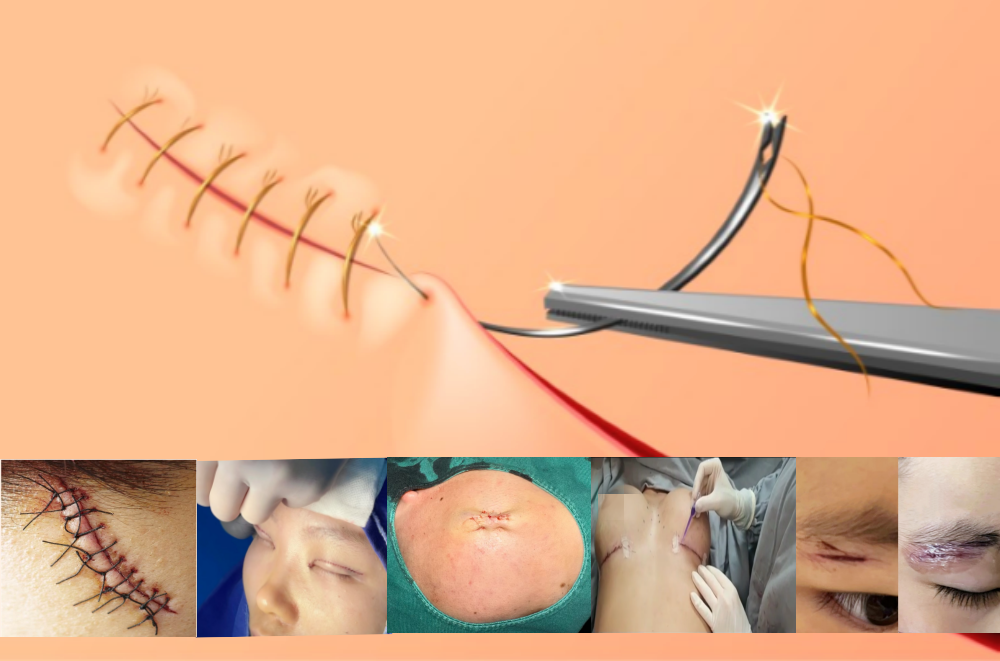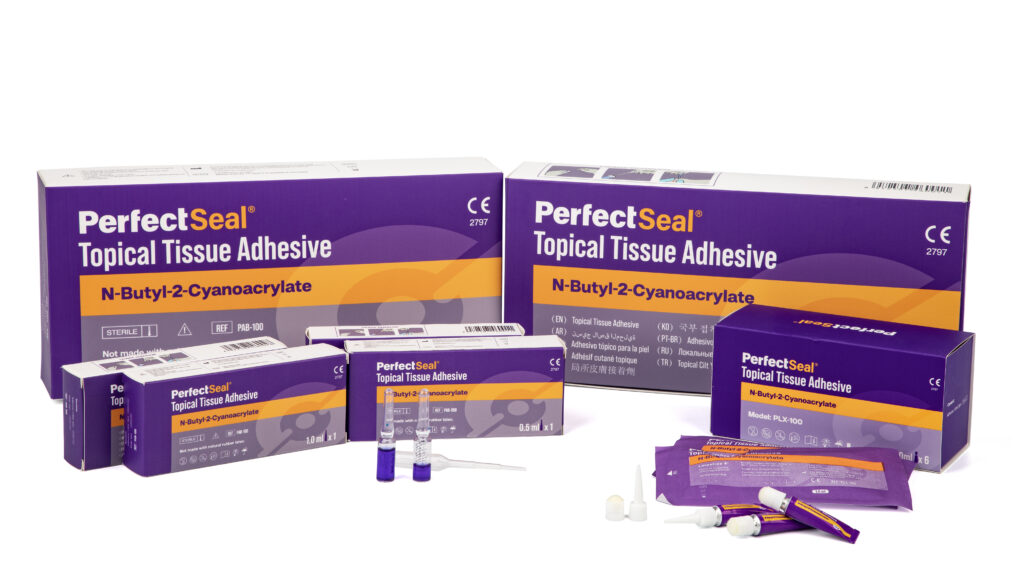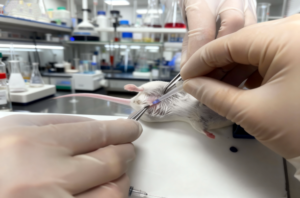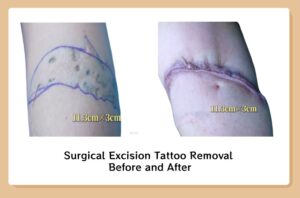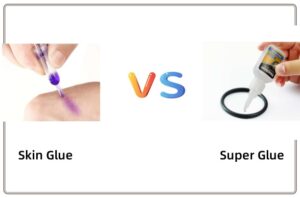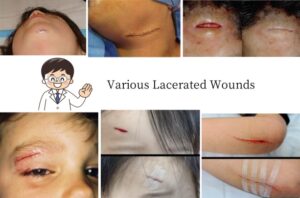In order to close wounds and facilitate their correct recovery, suturing is an essential medical procedure. How you handle a little cut or a large wound might have a significant impact.
From the most basic techniques, such as interrupted and continuous sutures, to the most complex, such cosmetic suturing, we will cover it all in this post.
Additionally, we will discuss how tissue adhesives are revolutionizing the cosmetic industry by enhancing outcomes while reducing complications. Investigating the field of suturing will help us choose the most appropriate approach for treating various wounds.
Key Suture Techniques in Clinical
Suture Materials & Tools
To close a wound properly, you need the right suture materials and tools. They are different depending on how well they absorb, how strong they are, and how they react with tissue.
Important Suture Materials
Absorbable Sutures
E.g., Vicryl (synthetic, lasts about 75 days), Monocryl (soft, excellent for skin), and Catgut (natural, very reactive)
Use: Muscles, organs, and other internal tissues. They dissolve on their own, so you do not have to remove them.
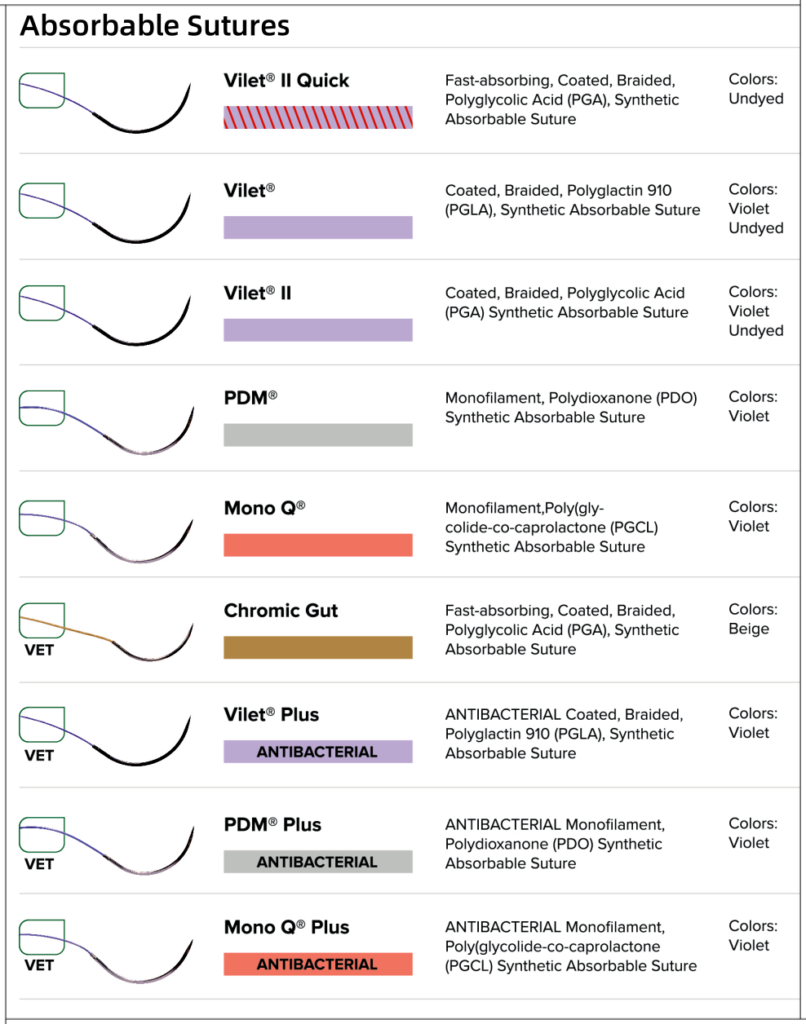
Non-Absorbable Sutures
E.g., Nylon (monofilament, low risk of infection), Silk (braided, easy to work with), and Polypropylene (inert, for sensitive areas)
Use: Closing up skin and supporting areas that need it for a long time (like tendons)
Suture Needles: Needles that cut in reverse (for skin) and are tapered (for internal tissues)
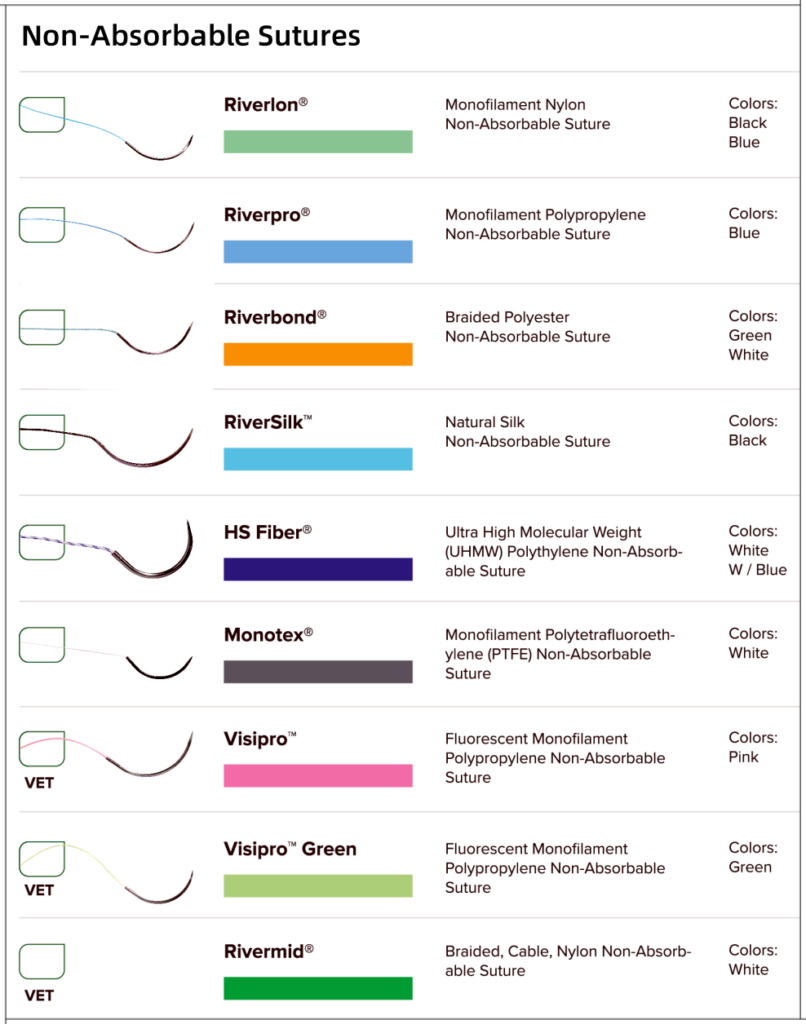
Tools:
- Needle holders (for a secure grip)
- Tissue forceps (for gentle handling)
- Scissors (for precise cutting)
Ergonomics: Using tools that are lightweight and have non-slip grips can help reduce hand fatigue during long procedures.
Tips for Choosing Suture Materials
Low-Reactivity Choices: Nylon or polypropylene reduces inflammation.
Braided vs. Monofilament:
Braided (like silk) is simple to use but can become infected; monofilament (like nylon) prevents bacteria from growing.
For oral surgery, do not use silk (it holds onto bacteria well); use PTFE or nylon instead.
This result is for reference only. The actual plan is subject to the doctor’s diagnosis.
Key Suture Methods
Interrupted Sutures
Interrupted sutures are individual stitches placed separately, with each stitch tied off independently.
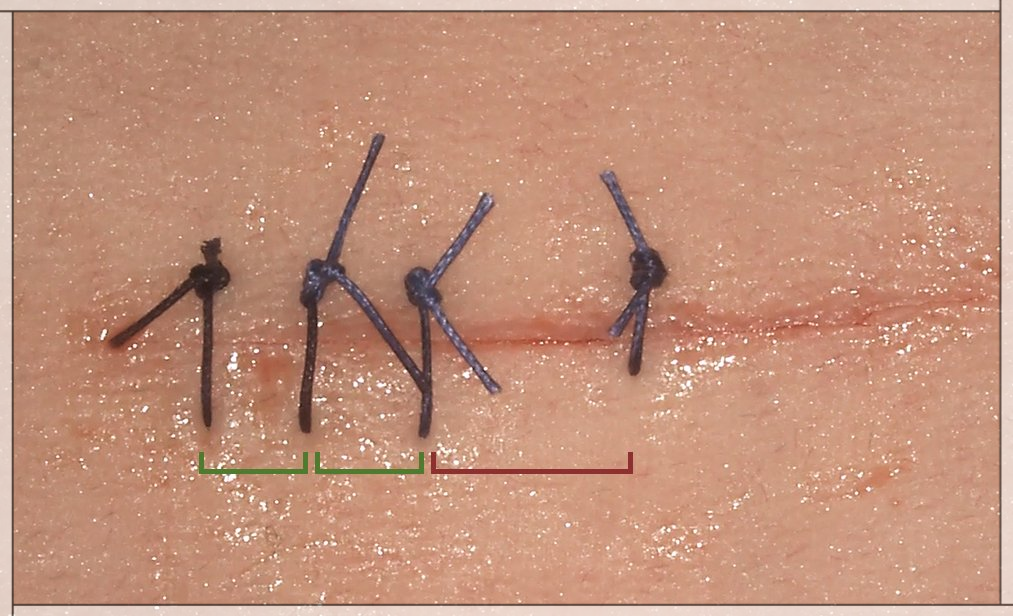
Advantages:
Secure (if one breaks, others hold); Good for infected/uneven wounds
Cons:
It takes a long time to apply, and the scar may be more visible.
Usage: This suture method is typically used to close wounds located on the scalp, limbs, and trunk.
Continuous Sutures
Continuous sutures use a single, unbroken thread to close the entire wound.
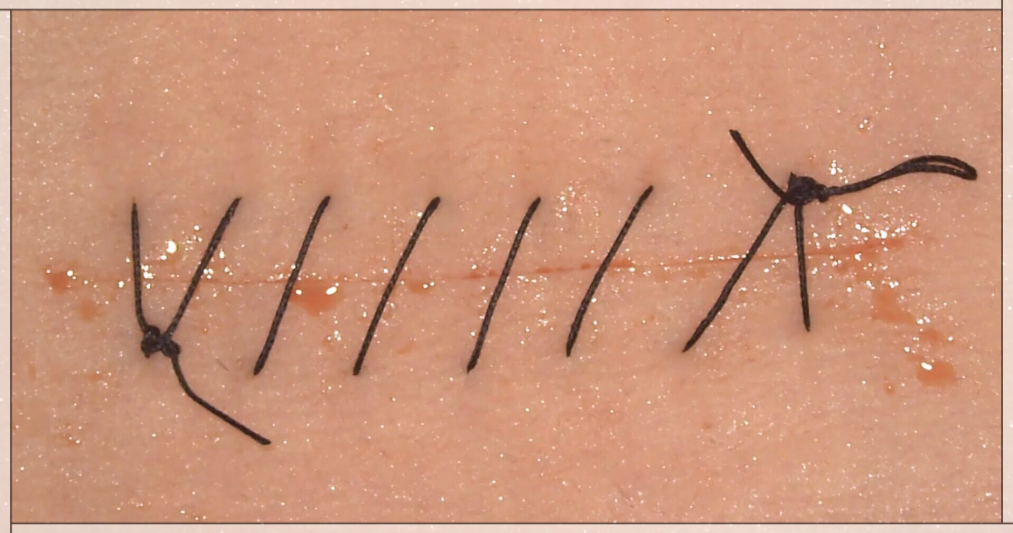
Advantages:
Faster to place and distribute tension evenly along the wound.
Disadvantages: If the suture breaks, the entire wound may open.
Common Uses: Ideal for long, straight wounds or when rapid closure is needed.
Continuous sutures are faster than interrupted sutures but less secure if they break.
Application: Used for both ordinary and some cosmetic suturing.
Mattress Sutures
Horizontal and vertical versions of mattress sutures are designed to alleviate strain and encourage the eversion of wound edges.
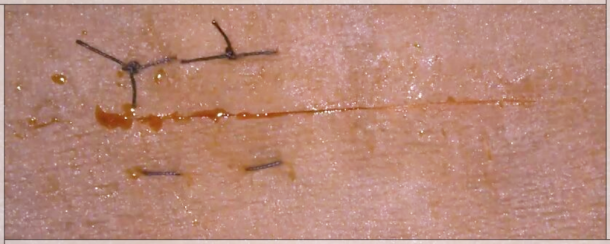
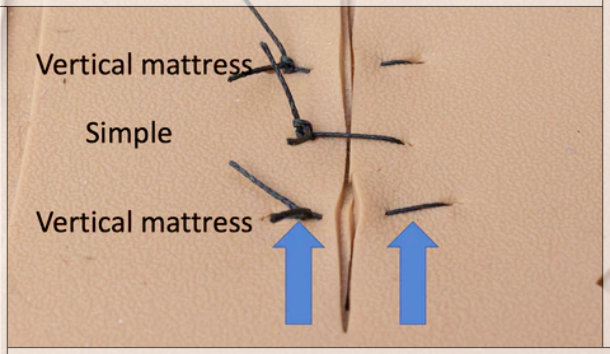
Advantages:
Reduce dead space and be great for high-tension wounds.
Disadvantages:
If it is excessively tight, it may suffocate the blood supply.
Common Uses: High-tension wounds, such as those on the scalp or in areas with poor support.
Application: Both horizontal and vertical mattress sutures are used in ordinary suturing for high-tension wounds.
Subcuticular Sutures
Subcuticular sutures are placed just beneath the skin surface, minimizing visible scarring.
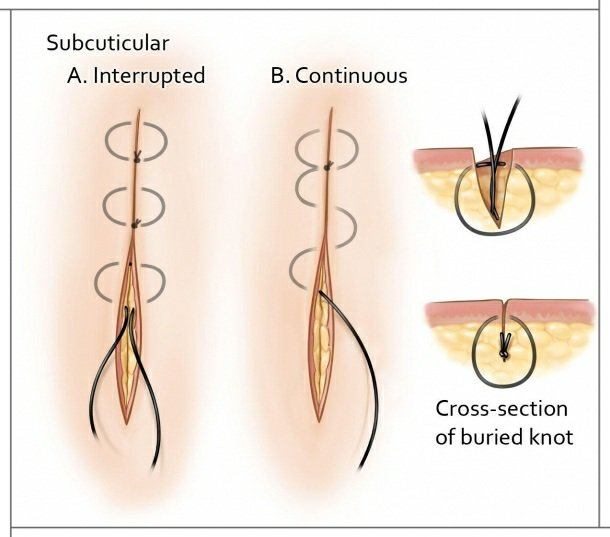
Advantages:
Reduces scar visibility and improves appearance.
Disadvantages:
Tricky technique; longer setup time.
Common Uses: Ideal for cosmetic suturing, especially on the face and neck.
Application: Core technique in cosmetic suturing, minimizing scars by avoiding surface penetration.
Cosmetic VS Ordinary Suturing
What is ordinary suturing?
Ordinary suturing (also known as surgical suturing) is a fundamental technique in emergency and surgical departments, with the primary goals of rapid hemostasis, preventing infection, and promoting the recovery of bodily functions. By using a thick needle and large thread to directly pull together the full-thickness wound, the procedure is quick.
Feature
Suture Material: 2-0, 3-0 coarse thread (diameter 0.1–0.15 mm), prominent needle holes, prone to leaving “centipede foot” scars. |
Technical limitations: No layered suturing, high-tension suturing, high scar hyperplasia rate. |
Application: non-exposed areas, such as limbs and trunks, or wounds where function preservation is prioritized during emergency care. |
What is cosmetic suturing?
Cosmetic suturing (also known as ultra-tension-reducing fine suturing) is performed by plastic surgeons or scar specialists. It uses a layered tension-reducing technique (subcutaneous anchoring + fine epidermal alignment) to minimize skin tension to the greatest extent possible, achieving minimal scarring.
Feature
Layered suturing: Muscle/fascia layer → subcutaneous layer → skin layer, dispersing tension layer by layer. |
Ultra-reduced tension suturing: deep sutures anchored distally, with “zero tension” adherence of the epidermis. |
Cosmetic Sutures: 5-0 to 7-0 cosmetic sutures (diameter 0.05–0.07mm, finer than hair), needle holes are almost invisible |
Skin Texture Alignment: Incisions are designed according to the direction of skin texture to reduce scar stretching |
Application: Exposed areas such as the face, neck, and hands, or cosmetic surgeries with high aesthetic requirements |
The difference between cosmetic suturing and ordinary suturing
Item | Ordinary Suturing | Cosmetic Suturing |
Suture technique | Full-layer closure, high tension | Layered closure, ultra-low tension |
Suture material | 2-0/3-0 thick silk sutures | 5-0 to 7-0 fine cosmetic sutures |
Time-consuming | 10-30 minutes | 30 minutes to 2 hours |
Scar risk | High | Low |
Cost | Low | Higher |
Cost-effectiveness | Short-term economical, long-term high scar repair costs | Higher initial cost avoids future repair costs |
Application of tissue adhesive in cosmetic suture
Tissue adhesive glue is an innovative product in cosmetic suturing. This medical cyanoacrylate glue polymerizes (hardens) upon contact with moisture or body fluids.
This process forms a strong bond, holding the tissues together while the natural healing process occurs underneath.
In cosmetic procedures, we often use absorbable sutures to close the subcutaneous tension layer to reduce tension. Then, use cyanoacrylate tissue adhesive instead of traditional surface suturing to achieve seamless suturing.
The benefits of cosmetic suturing using tissue glue to seal the dermal layer
1. Concealing Scars: Preventing Needle Mark Scars with Seamless Line Indentation. |
2. It protects the wound from outside invaders by creating a breathable, transparent, and waterproof mesh screen. |
3. The glue film is on its own in 7-10 days, making it safe for use on children and those with sensitive skin. |
4. Practical and Time-Saving: The procedure does not require anesthetic,and the adhesive dries quickly, as illustrated in the process example. |
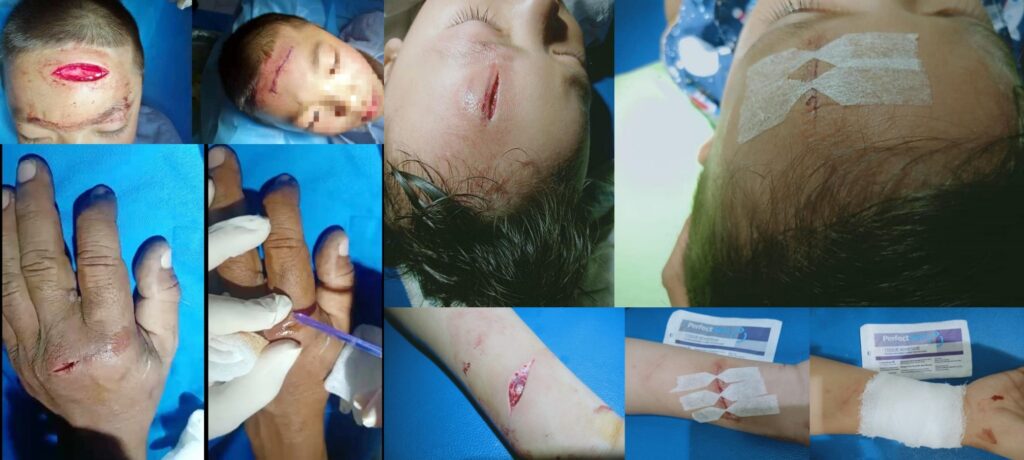
- Clinical Compatibility: Skin tissue glue can be used in conjunction with regular sutures, staples, surgical zipper stitches, and subcutaneous tension sutures to enhance the integrity of the suturing. Surgical incisions, lacerations, minimally invasive incisions, and other wound types may be supported. Adhesive tape, stitches, staples, zipper, glue: How to choose?
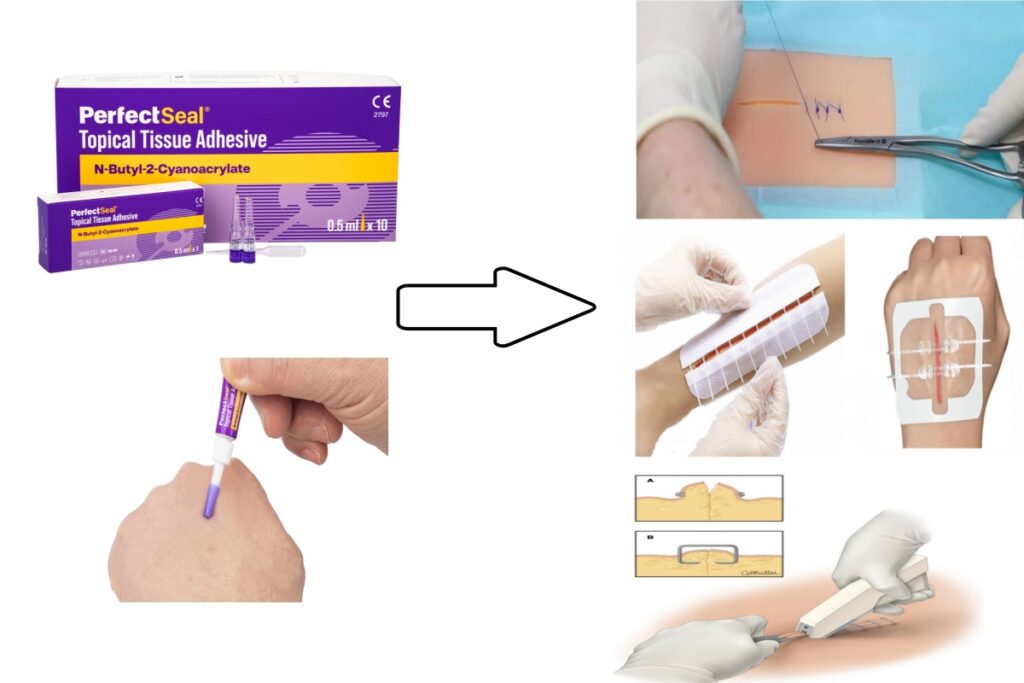
- Only for non-infected wounds;
- After debridement, dry the surface of the wound, then apply tissue adhesive to the aligned epidermis, avoiding dripping into the wound.
- The joint area needs to be stabilized with a brace (to prevent movement and cracking).
Warning: Do not apply to infected wounds or wounds that have excessive exudate.
Choosing the Right Suture Technique
To ensure optimal healing and aesthetic results, the following factors should be considered when choosing suturing techniques.
Choose the right suturing technique for different types of wounds.
Cosmetic suturing is mainly used for prominent areas such as the face and neck to reduce scarring, while conventional suturing techniques can be used for wounds on the limbs or torso. |
High-stress wounds on the scalp or over joints benefit from mattress or subcutaneous tension sutures to alleviate skin strain. |
For wounds with increased risk of infection, monofilament sutures or medical tissue adhesives may be preferable because to their reduced bacterial load. |
Healing Time: Patient health and projected healing time can influence closure technique selection. |
For optimum outcomes in normal or cosmetic suturing, follow these tips:
Proper Technique: Place sutures with uniform tension and wound edges aligned to enhance healing and reduce scarring. |
Tool Selection: Use ergonomic, high-quality instruments to prevent hand fatigue and enhance accuracy. |
Maintain stringent cleanliness practices to avoid infection and care for wounds after suturing. |
Monitoring wound healing and removing sutures as necessary requires routine follow-up. |
Suturing is a key skill in medical surgery, from traditional interrupted and continuous sutures to advanced cosmetic sutures using intradermal techniques and surgical tissue adhesives. Each suturing technique has its unique applications and advantages.
By understanding the characteristics of these suturing methods and selecting the appropriate suturing tools and materials, medical professionals can achieve optimal wound closure and aesthetic results.
References
- Adams B, Anwar J, Wrone DA, Alam M. Techniques for cutaneous sutured closures: Variants and indications. Semin Cutan Med Surg. 2003;22:306-16. [CrossRef] [PubMed] [Google Scholar]
- Sklar LR, Pourang A, Armstrong AW, Dhaliwal SK, Sivamani RK, Eisen DB. Comparison of running cutaneous suture spacing during linear wound closures and the effect on wound cosmesis of the face and neck: A randomized clinical trial. JAMA Dermatol. 2019;155:321-6. [CrossRef] [PubMed] [Google Scholar]
- Stoecker A, Blattner CM, Howerter S, Fancher W, Young J, Lear W. Effect of simple interrupted suture spacing on aesthetic and functional outcomes of skin closures. J Cutan Med Surg. 2019;23:580-5. [CrossRef] [PubMed] [Google Scholar]
- Singer AJ, Quinn JV, Hollander JE. The cyanoacrylate topical skin adhesives. Am J Emerg Med. 2008;26:490-6. [CrossRef] [PubMed] [Google Scholar]
- Wade RG, Wormald JC, Figus A. Absorbable versus nonabsorbable sutures for skin closure after carpal tunnel decompression surgery. Cochrane Database Syst Rev. 2018;2:CD011757. [CrossRef] [PubMed] [Google Scholar]
- Krishnamoorthy B, Najam O, Khan UA, Waterworth P, Fildes JE, Yonan N. Randomized prospective study comparing conventional subcuticular skin closure with Dermabond skin glue after saphenous vein harvesting. Ann Thorac Surg. 2009;88:1445-9. [CrossRef] [PubMed] [Google Scholar]
- Perin LF, Helene A Jr, Fraga MF. Sutureless closure of the upper eyelids in blepharoplasty: Use of octyl-2-cyanoacrylate. Aesthet Surg J. 2009;29:87-92. [CrossRef] [PubMed] [Google Scholar]
- Sniezek PJ, Walling HW, DeBloom JR 3rd, Messingham MJ, VanBeek MJ, Kreiter CD, et al. A randomized controlled trial of high-viscosity 2-octyl cyanoacrylate tissue adhesive versus sutures in repairing facial wounds following Mohs micrographic surgery. Dermatol Surg. 2007;33:966-71. [CrossRef] [PubMed] [Google Scholar]
- Greenhill GA, O’Regan B. Incidence of hypertrophic and keloid scars after N-butyl 2-cyanoacrylate tissue adhesive had been used to close parotidectomy wounds: A prospective study of 100 consecutive patients. Br J Oral Maxillofac Surg. 2009;47:290-3. [CrossRef] [PubMed] [Google Scholar]
- Yag-Howard C. Zipper stitch: A novel aesthetic subcutaneous closure. Dermatol Surg. 2013;39:1400-2. [CrossRef] [PubMed] [Google Scholar]

